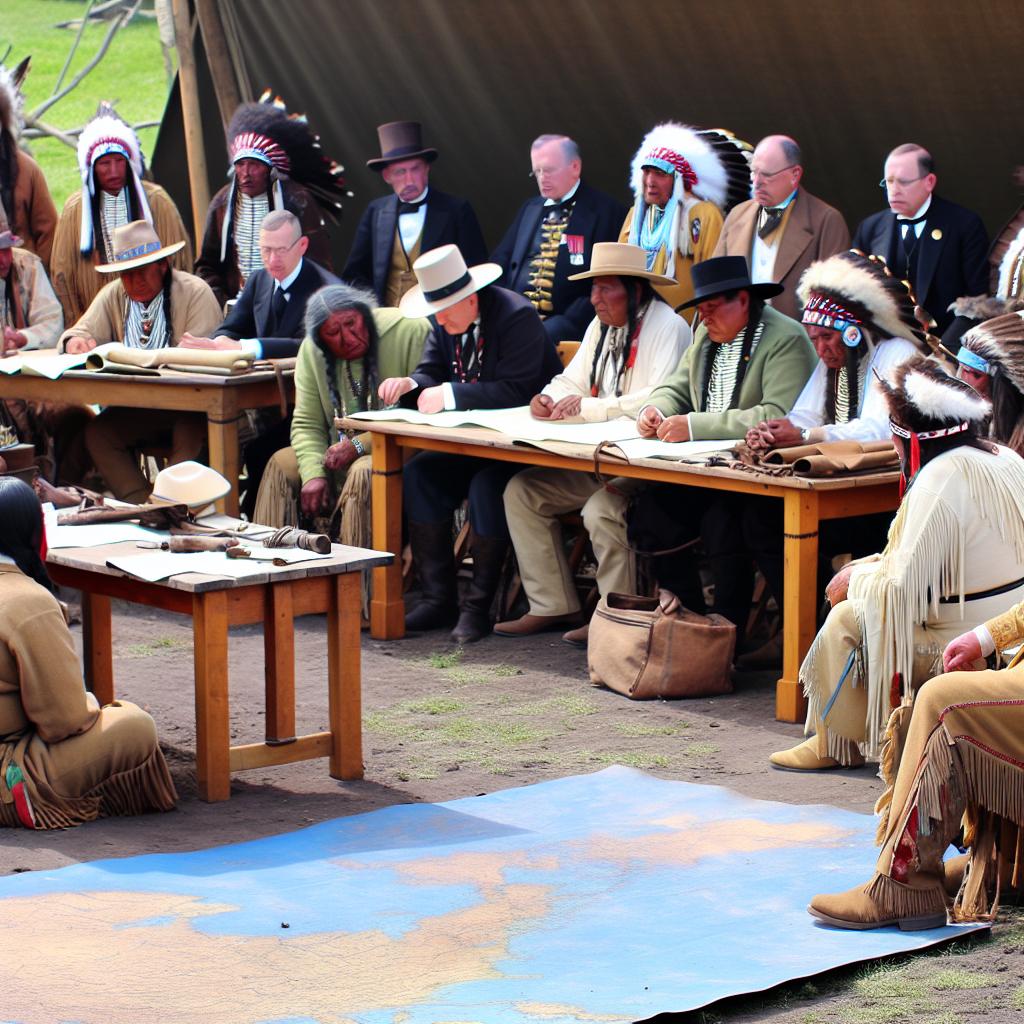Introduction to Native American Treaties
Native American treaties with the U.S. government are pivotal documents in American history, impacting the lives and sovereignty of Indigenous peoples across the continent. These agreements, often complex and multifaceted, laid the foundation for relationships between various tribes and the federal government. Understanding these treaties provides insight into not only historical contexts but also current legal and political discussions.
Historical Context
The process of treaty-making began shortly after the formation of the United States and stretched over several decades, predominantly from the late 18th century to the end of the 19th century. This era was marked by rapid territorial expansion driven by the belief in Manifest Destiny and a growing need for resources. The U.S. government viewed treaties as crucial mechanisms for legitimizing this expansion while attempting to mitigate potential conflicts with Native American tribes. The treaties were often born out of periods of expansion, resource acquisition, or conflict resolution. European settlers and later, the U.S. government, sought to legitimize territorial expansion by obtaining land cessions through these agreements.
Negotiation Process
The negotiation process often involved representatives from the U.S. government and leaders of Native American tribes. Such meetings were not merely legal formalities; they were complex interactions influenced by power dynamics. U.S. representatives frequently sought to align with certain factions within tribes, sometimes exploiting internal divisions to leverage better terms for the federal government. Unfortunately, many treaties were signed under duress or through misleading promises to the Indigenous parties. The negotiation landscape was thus fraught with challenges and inequalities, leaving lasting impacts on the tribes involved.
Key Treaties
A myriad of treaties were signed between the U.S. government and Native American tribes. Some notable ones include:
The Treaty of Fort Laramie (1851) aimed to secure peace on the Great Plains. It was negotiated with multiple tribes, including the Sioux, Cheyenne, and Arapaho, intending to establish clear territorial boundaries for the tribes while granting the U.S. government safe passage along the Oregon Trail. This agreement sought to balance settler expansion with tribal land rights, yet it also paved the way for further incursions into Native territories.
The Treaty of Greenville (1795) was instrumental in ending the Northwest Indian War. This treaty came after intense conflict in the Ohio Country, resulting in significant land cessions by Native tribes such as the Shawnee and Miami. The treaty expanded U.S. territories in what is now Ohio and parts of other Midwestern states, exemplifying how treaties were used to secure lands for settlement following military victories.
The Treaty of New Echota (1835) was negotiated with a small faction of the Cherokee Nation, ultimately leading to the forced relocation known as the “Trail of Tears.” Despite opposition from the majority of the Cherokee people and their principal chief, John Ross, the treaty was ratified. Its enforcement highlighted the U.S. government’s willingness to breach agreements when it served their interests, disregarding severe humanitarian impacts.
Legal Standing and Modern Implications
Native American treaties hold significant legal status in the United States. According to the Constitution, treaties are part of the “supreme Law of the Land.” Consequently, interpretations and enforcement of these treaties often reach the U.S. Supreme Court, impacting ongoing discussions about tribal sovereignty, land claims, and resource rights. The treaties continue to influence various legal dimensions, including jurisdiction, resource management, and self-governance. Esteemed cases such as Worcester v. Georgia have reinforced the recognition of tribal sovereignty, sometimes resting heavily on treaty stipulations.
Many modern legal cases continue to reference these treaties when addressing disputes about land use, water rights, and tribal governance. Such cases emphasize the enduring importance of these historical documents in shaping the relationships between Native American tribes and the U.S. government. The treaties serve as critical repositories of rights and promises, with their interpretations being vital in preserving the autonomy and resources of Native nations.
Current Issues
Despite their importance, the promises of numerous treaties remain unfulfilled, leading to ongoing legal battles and advocacy for the recognition of treaty rights. Efforts to honor these agreements tend to focus on restoring land rights, ensuring resource access, and acknowledging historical injustices. Tribes across the nation continue to campaign for the U.S. government to uphold treaty clauses still relevant today, such as those governing fishing rights, hunting privileges, and protection from encroachments.
The complexities of settling claims often lie in interpreting treaties whose language reflects a vastly different sociopolitical landscape. Judicial systems sometimes struggle to reconcile historical textual discrepancies with contemporary issues. Additionally, realigning public perceptions to understand treaties as living documents rather than archival relics involves substantial educational efforts.
For more information on the legal status of Native American treaties, you might visit an authoritative source like the CourtListener, which provides access to legal resources and cases. This can provide insights into recent rulings and ongoing legal interpretations surrounding these treaties.
Conclusion
The treaties between Native American tribes and the U.S. government are a crucial part of American history. While they were often marked by imbalanced negotiations and broken promises, their legal standing remains a powerful tool for advocacy and justice. Understanding these agreements and their implications is essential for appreciating the complex history and current issues surrounding Native American sovereignty and rights. As discussions about reparations and reconciliation continue, these treaties serve as foundational documents highlighting the need for justice and recognition in U.S. policy-making and tribal negotiations. Ensuring these commitments are honored is an ongoing process, requiring both legislative and societal dedication to authenticity and righteousness.

